Kungsleden Trail Sweden

Kungsleden Trail, Sweden
Written by Bee Roper & Photos by Theo Gove-Humphries
A 440km hike along Swedens most impressive landscapes, the Kungsleden skirts the countries highest mountain (Kebnekaise), crosses through a number National Parks and a nature reserve, reaches varying elevations up to 3,770ft along the perilously rocky Tjäktja Pass, and brings you face to face with an abundance of wildlife.
Reaching the beginning of the trail is an adventure in itself; catching a coach in the middle of the night to Stanstead, a two hour flight to Stockholm, then a cramped 20 hours train ride up the length of Sweden into Lapland. Jumping off the train laden with a 20kg pack and a strong determination to leave civilisation behind within the last largest remaining wilderness in Europe – the next 30 days would be life changing.
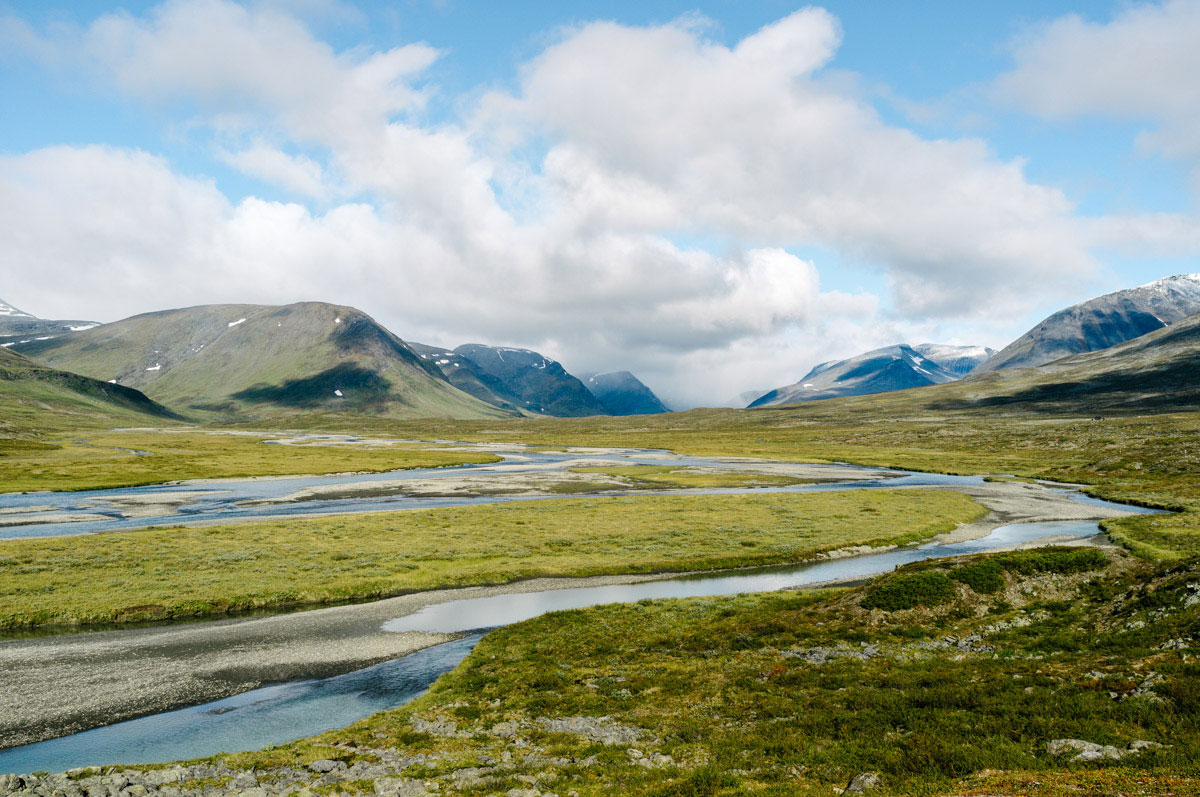
Tjäktjavagge

Wardens cabin at Sälka
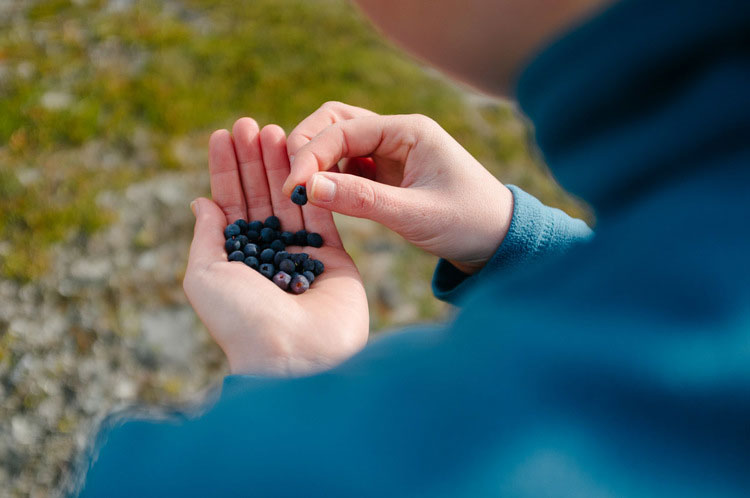
Fresh blueberries between Abiskojaure and Alesjaure
Myself, my partner, and two friends all began our adventure on September 4th with the late summer sun beating down on our backs. T-shirts were worn regularly over the first two weeks. Envisioning the Arctic circle and the dramatic weather we’d encountered there the year before, it was a joyful surprise to find temperatures reaching up to 20°C as we followed the foot-wide trail along baking plateaus whilst herds of Reindeer deftly manoeuvred their way around us as they continued to graze.
The constant presence of cabins throughout the majority of the trail enables regular check-points (9-22km) with a clear end-goal for the day (unless you have the desire to double your distance or continue further with the plan to wild camp).

Looking back along Tjäktjavagge between Singi and Kaitumjaure
Wolverine, Fox, Moose, Lemming, Reindeer, even the rare Bear left their marks along the way. Covering the landscape along the trail as us hikers did it became a habit to watch the muddy path for tracks or droppings, prey and predator both following the same ground. An afternoon spent blueberry picking whilst the photographers captured the scenery along the edge of Sarek National Park will be forever ingrained in my memory as we happened across the largest scat ever seen; a bear had filled its berry quota for the day and emptied its contents slap bang in the middle of the trail. This was, unfortunately, the closest we came to seeing a bear.

Reindeer between Saltoluokta and Sitojaure
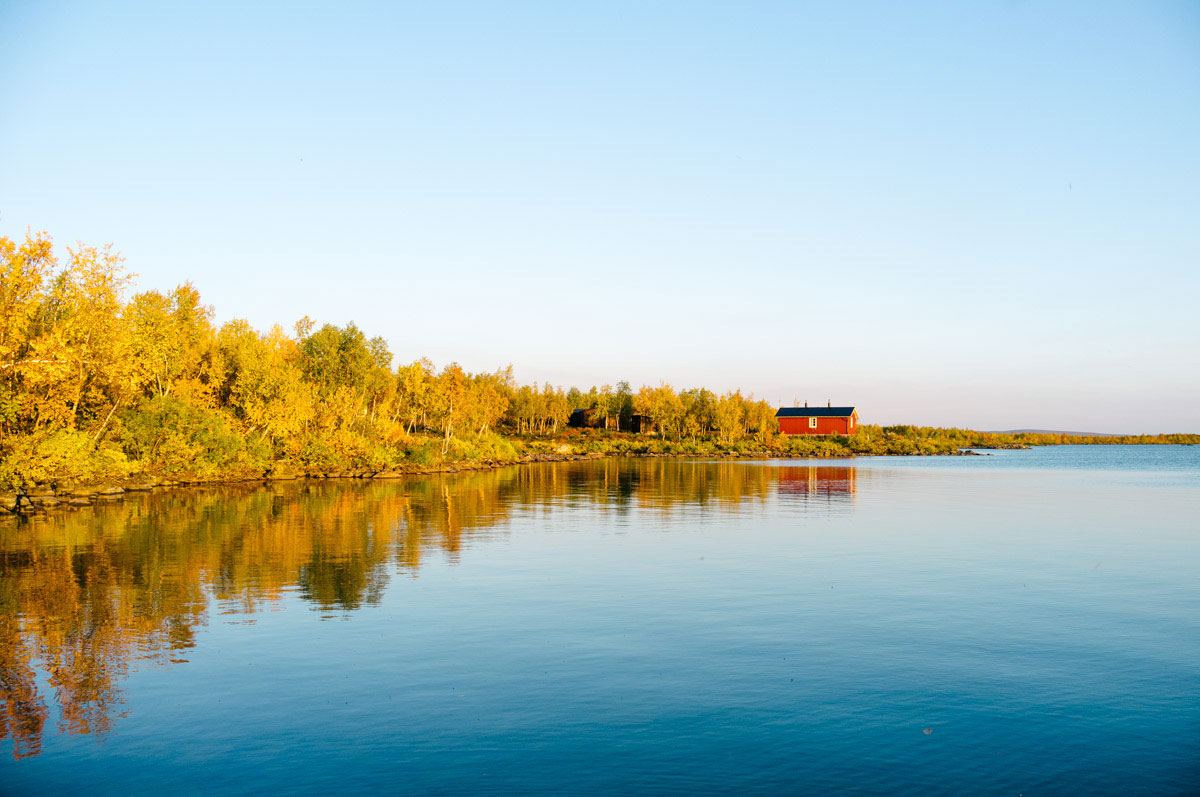
Cabin overlooking Sitojaure
Pitching up in the rain was a welcome retreat to the constant downpour which followed us for a week between Kvikkjokk and Ammarnäs. Never stopping come day or night, we found ourselves distraught with a wet tent – both outside and in. The need to find a dry shelter pressed heavily on our minds, as Theo battled an ear infection and the rain had thoroughly permeated every aspect of our being. Words cannot express the relief at reaching Jakkvik, a small town mid-way through the largest and toughest portion of the trail. We holed up in a small cabin for two nights, hoping our gear could dry out and Theo’s ear would calm down somewhat (it did).
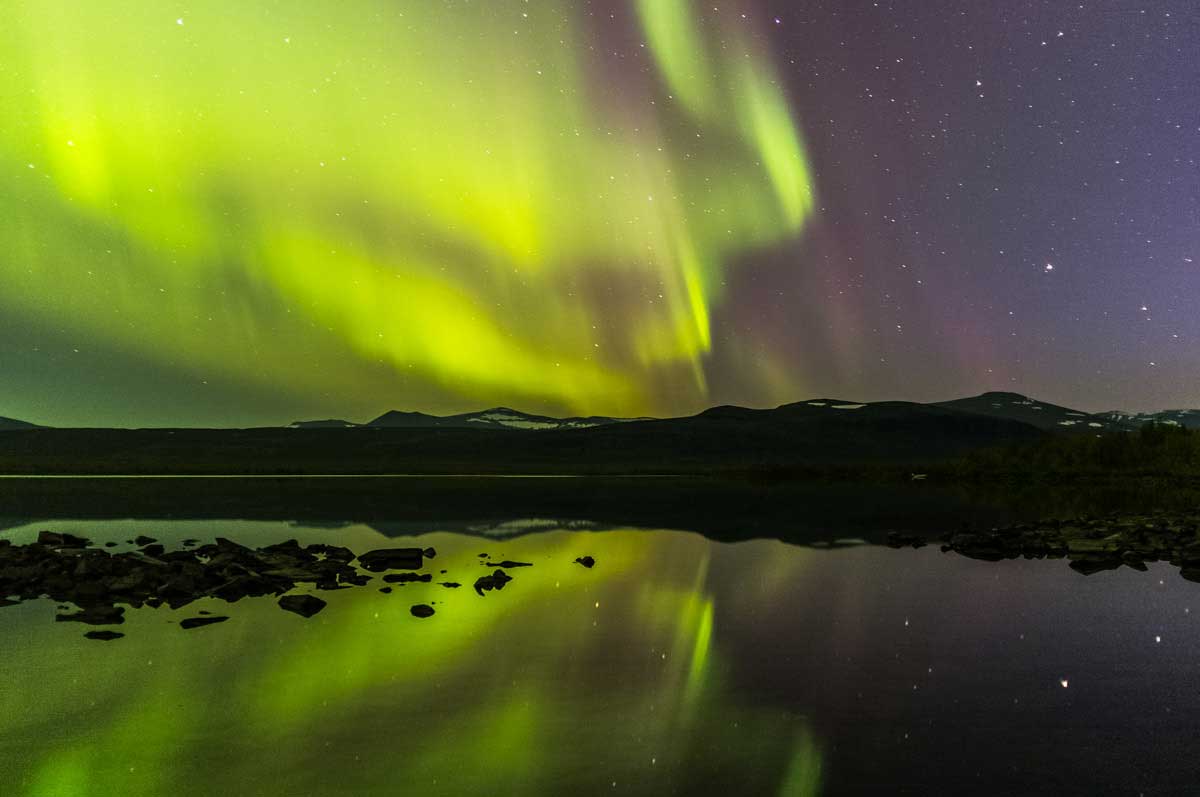
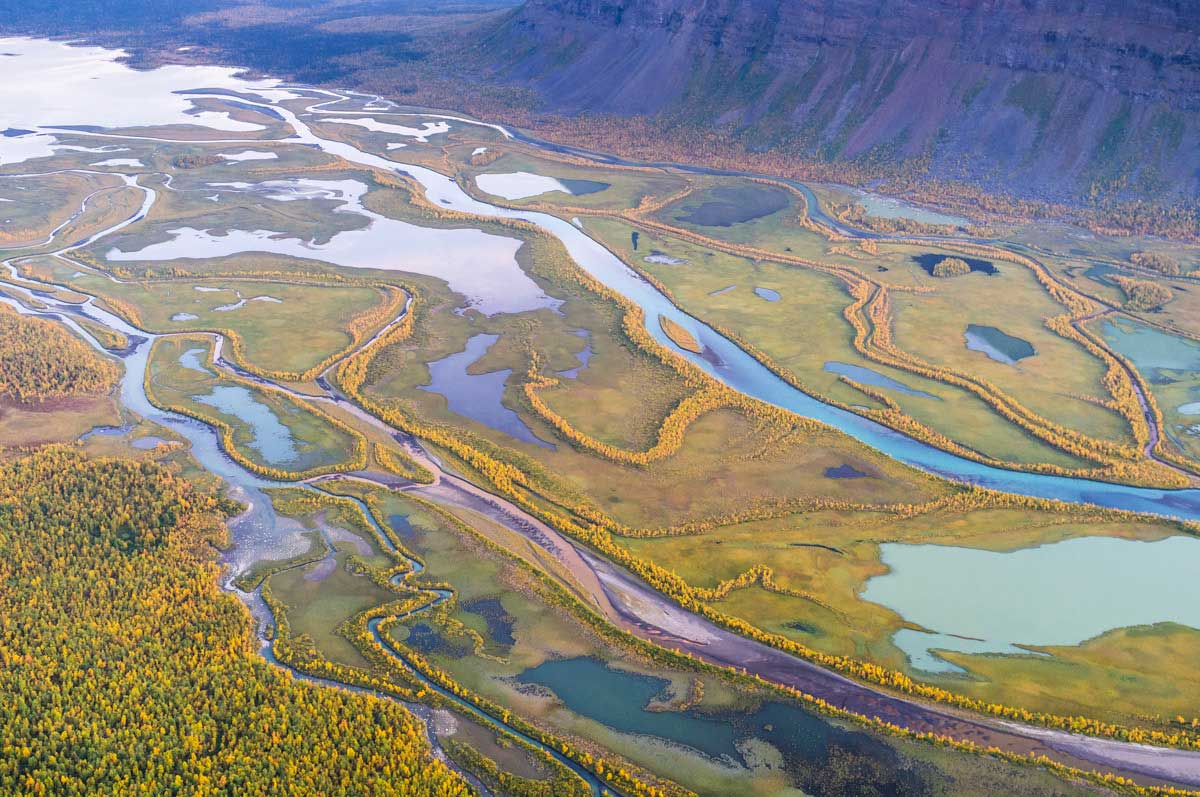
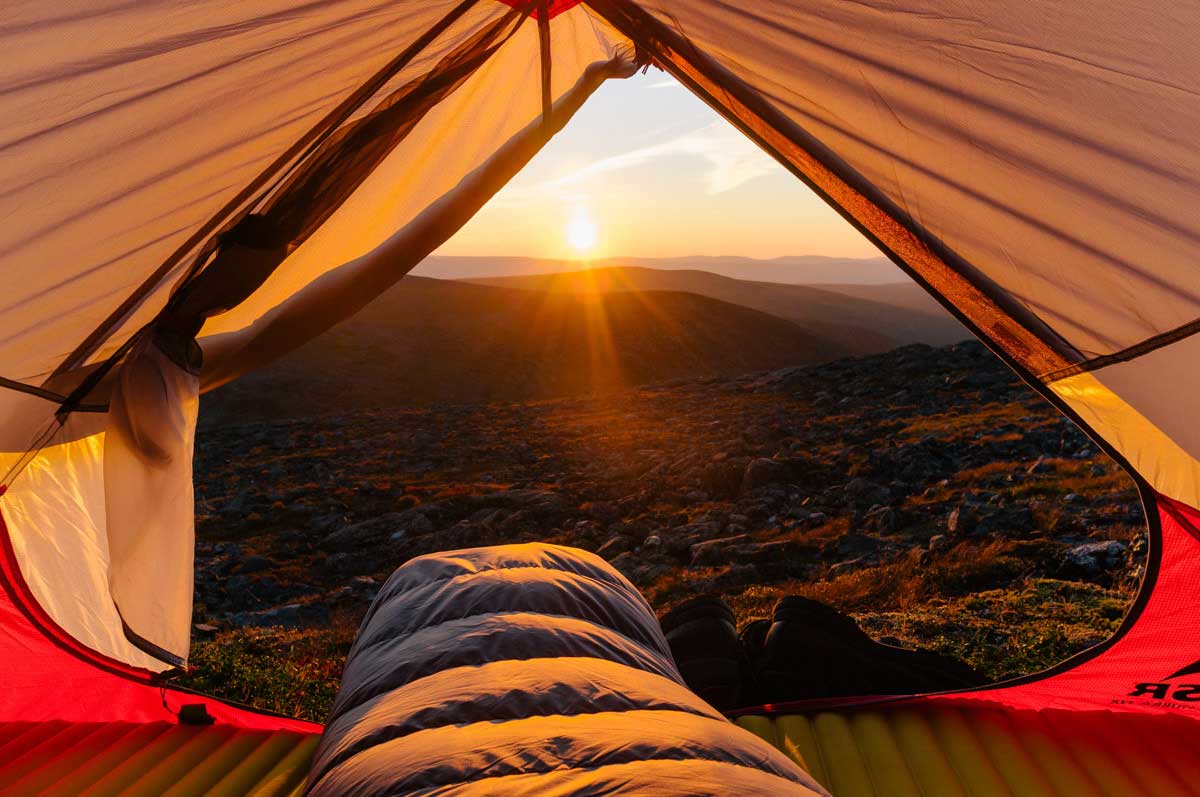
Hiking through Sweden in September has many rewards, most noticeably the oncoming of autumn. Fiery vistas, flurries of golden leaves whipping about your face, fresh snow descending overnight along the mountain tops, crackling wood burners keeping the chill at bay, and the scaling back of people throughout the landscape. As October approached we no longer passed scores of other hikers, in fact we hadn’t crossed paths with anybody else for almost two weeks since our group had split due to injury – just myself and my partner remained.
Less trodden sections of the trail find you covering unbroken ground, moss carpets the floor thus covering the trail, dense fog reduces vision to a number of feet and the chance of making a wrong turn becomes high.
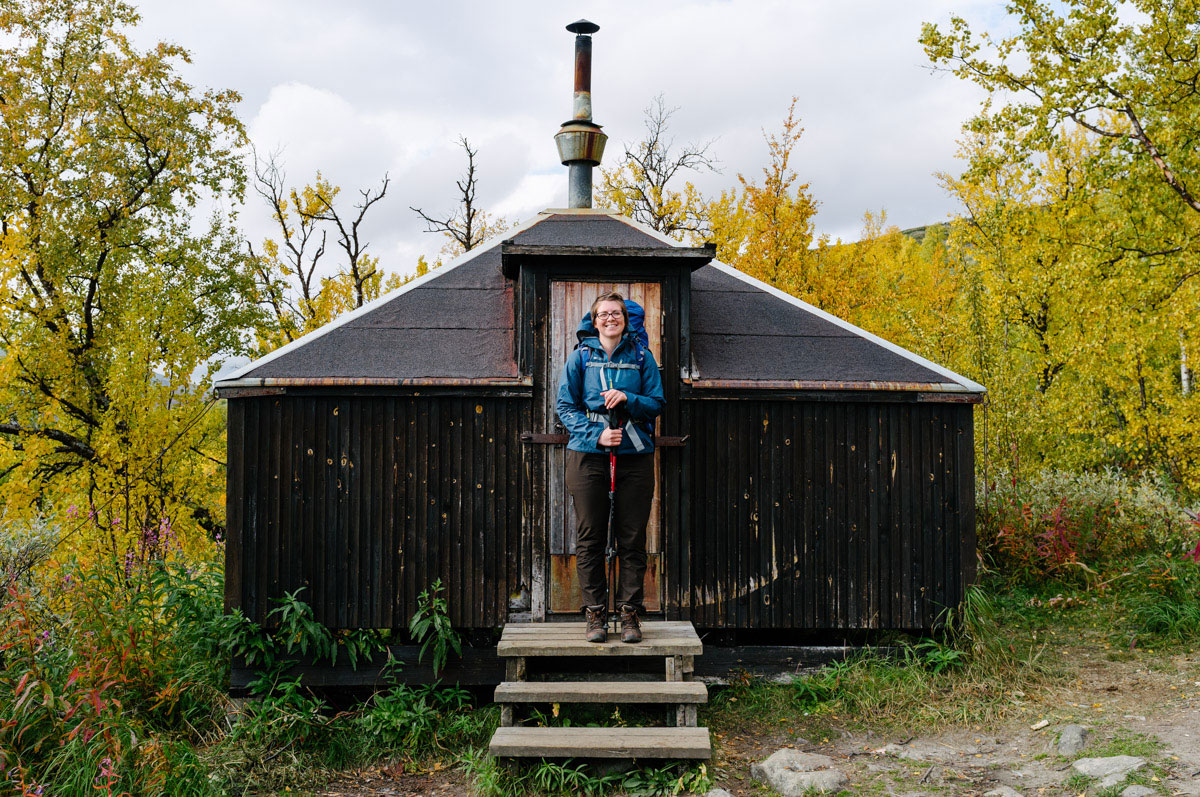
Midway to Pårte
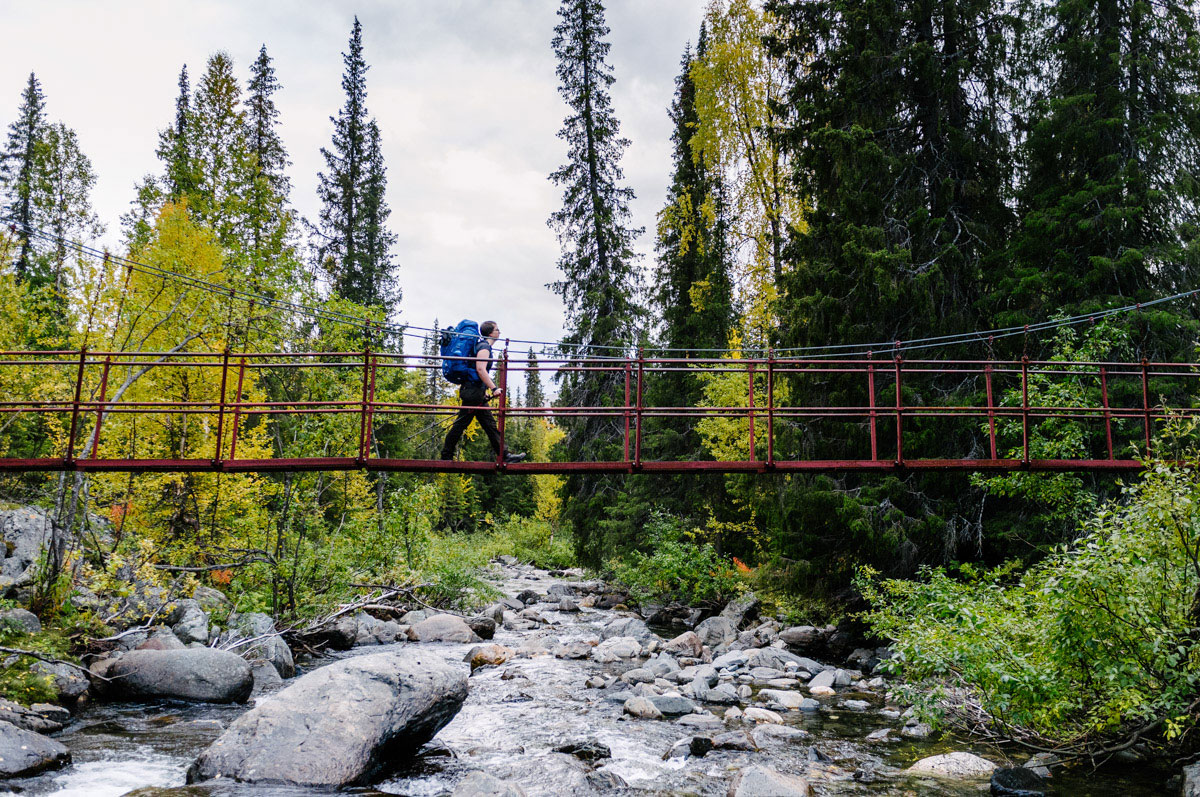
Between Akste and Pårte

First night between Kvikkjokk and Jäkkvik
There’s no denying Sweden’s wet landscape; over 97,000 Lakes dot the country with thousands of rivers and streams interconnecting vast water sources. Crystalline and pure in taste, you can drink water from any flowing water source along the Kungsleden, allowing hikers to make tracks without the necessity of carrying an entire days water supply on your person. A cup will suffice as many people swiftly duck their vessels into streams as they pass by, lightening their load and allowing for an easier experience.
Mires are prevalent throughout, the use of boards saving your boots from soggy entrapment within deep sections of water saturated sphagnum. The times where you’d find the trail vanishing amongst the mire with 100m to cover without high ground, boulders, or boards would present the opportunity to either slosh right on through, dance your way across the driest sections you could see, or dedicate a few minutes of your time to an alternative – and quite often just as sodden – route around in the hopes of keeping your boots dry.

Taking a rest at Juovvatjåhkka

Route planning to Ammarnäs
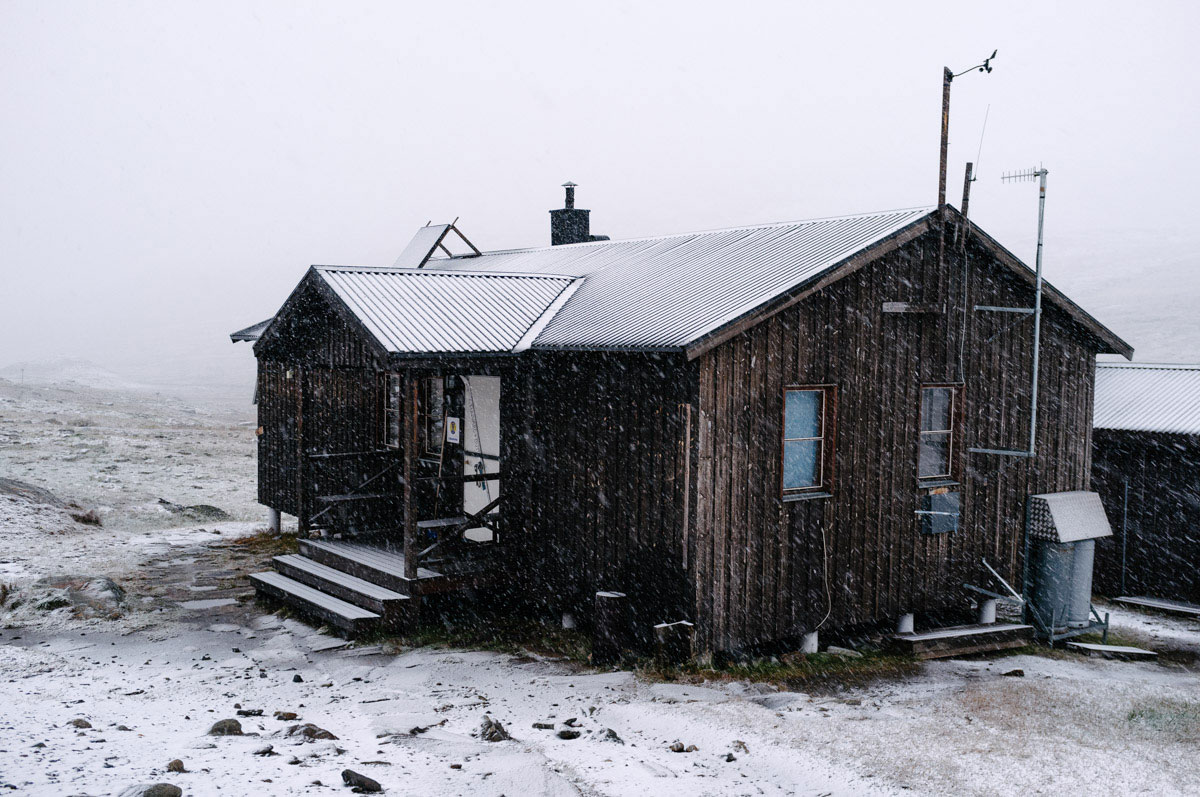
Viterskalet, the last cabin before Hemavan and the end of the trail
Crossing the trail end in Hemavan after 30 days, the last few battling blizzards which bombarded you body and spirit, we couldn’t have felt more alive.
Check out the full documentary below!
Photos (C) 2016 Theo Gove-Humphries
Bee and Theo have been traveling across Europe in their VW van since June 2014. Theo is a photographer and film maker, Bee a writer and animal conservationist. The two aim to “capture some of the most stunning places around Europe and adapt to [their] surroundings”. You can follow along through her social media accounts:

Photo of Bee by Theo Gove-Humphries
Be the first to comment